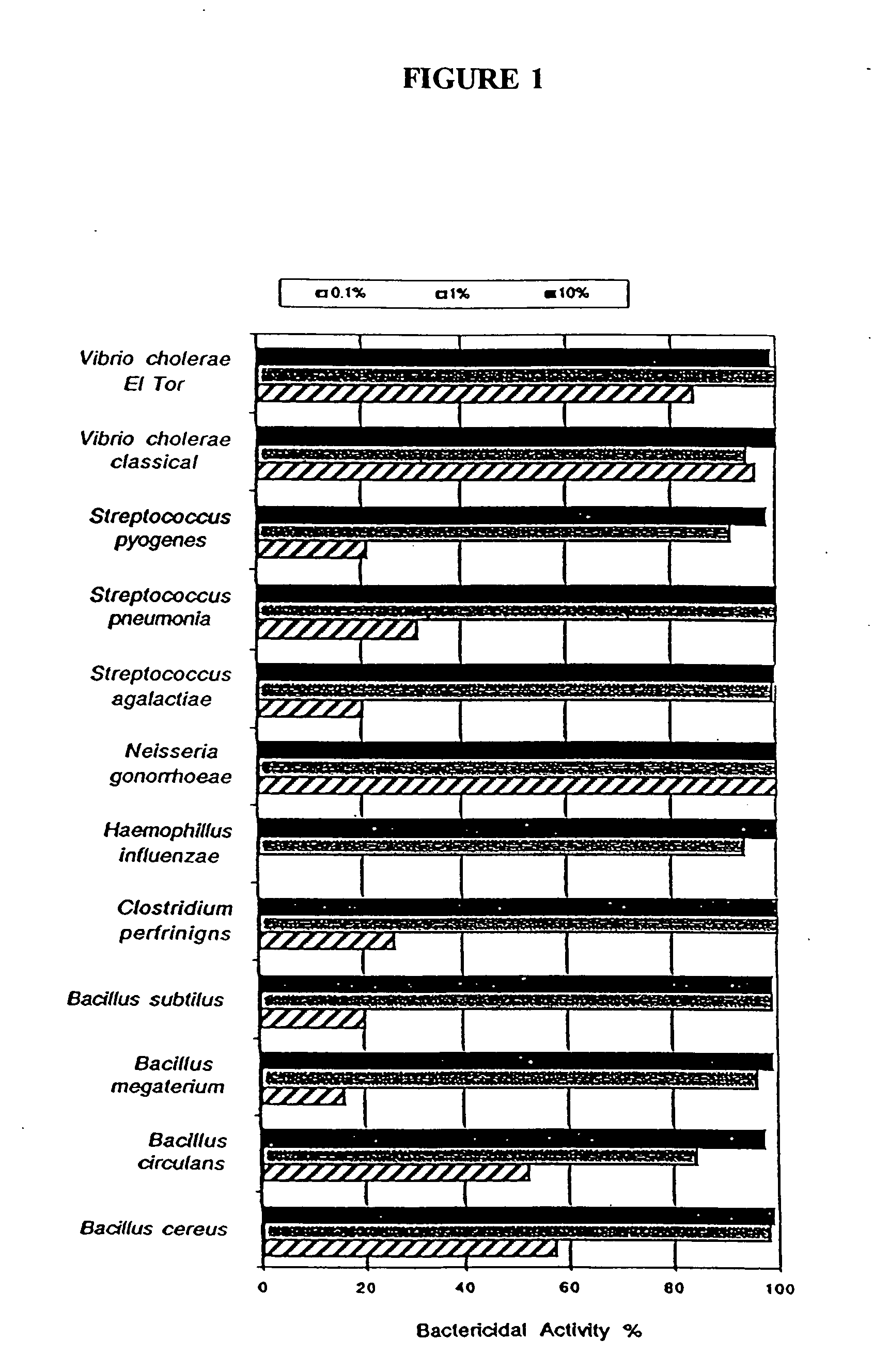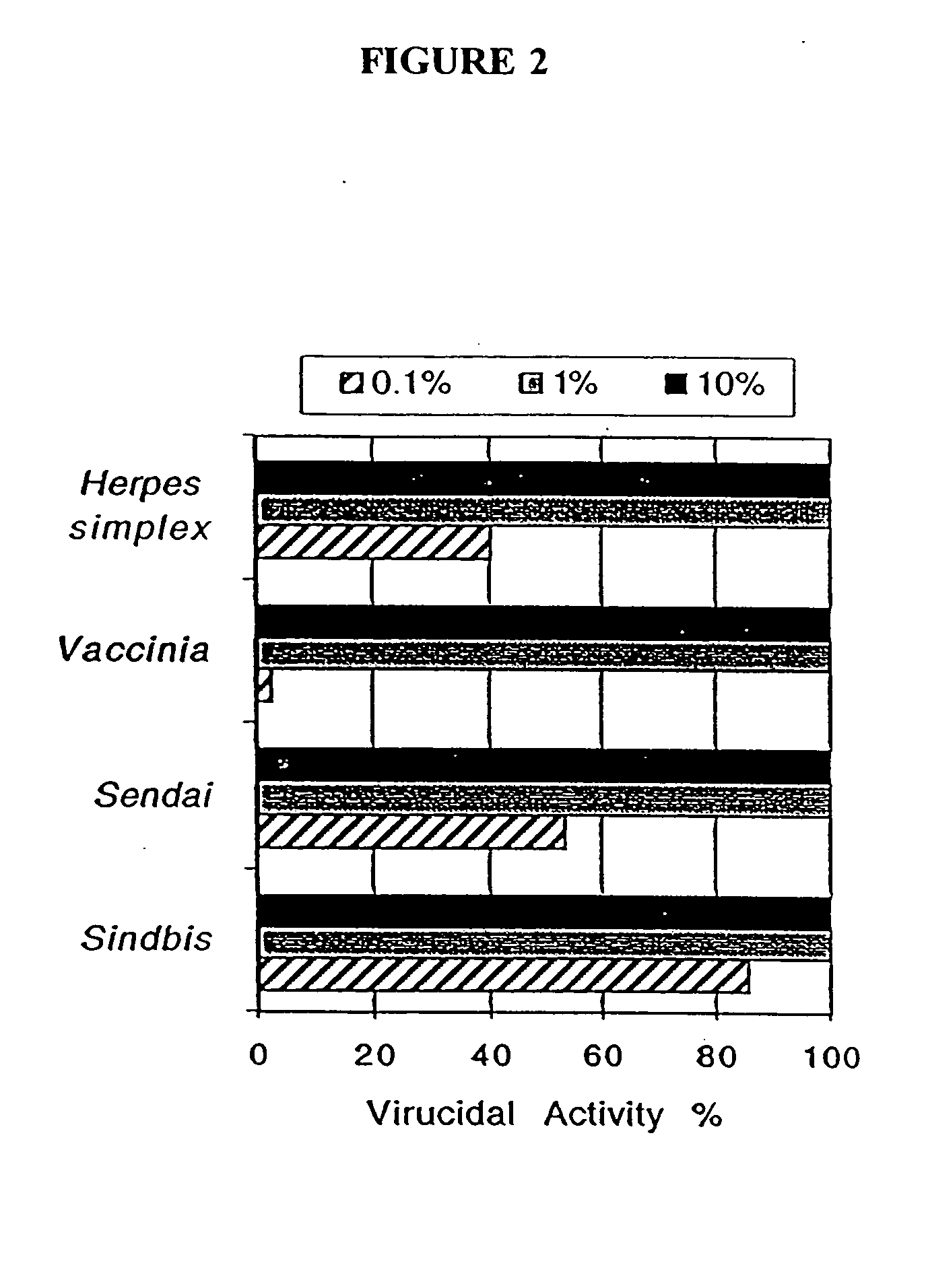Nanoemulsion vaccines
a technology of nanoemulsion and vaccine, which is applied in the direction of immunological disorders, antibacterial agents, antibody medical ingredients, etc., can solve the problems of ineffective current vaccine delivery system for a broad spectrum of diseases, inability to repeat immunization, and high risk of infection, so as to reduce the risk of infection, increase the spleen cellularity, and increase the expression of ifn-
- Summary
- Abstract
- Description
- Claims
- Application Information
AI Technical Summary
Benefits of technology
Problems solved by technology
Method used
Image
Examples
example 1
Methods of Formulating Emulsions
[0389] The emulsion is produced as follows: an oil phase is made by blending organic solvent, oil, and surfactant and then heating the resulting mixture at 37-90° C. for up to one hour. The emulsion is formed either with a reciprocating syringe instrumentation or Silverson high sheer mixer. The water phase is added to the oil phase and mixed for 1-30 minutes, preferably for 5 minutes. For emulsions containing volatile ingredients, the volatile ingredients are added along with the aqueous phase.
[0390] In one example, the emulsion was formed as follows: an oil phase was made by blending tri-butyl phosphate, soybean oil, and a surfactant (e.g., TRITON X-100) and then heating the resulting mixture at 86° C. for one hour. An emulsion was then produced by injecting water into the oil phase at a volume / volume ratio of one part oil phase to four parts water. The emulsion can be produced manually, with reciprocating syringe instrumentation, or with batch or ...
example 2
Characterization of an Exemplary Bacteria-Inactivating Emulsion as an Emulsified Liposome Formed in Lipid Droplets
[0393] A bacteria inactivating emulsion, designated X8W60PC, was formed by mixing a lipid-containing oil-in-water emulsion with X8P. In particular, a lipid-containing oil-in-water emulsion having glycerol monooleate (GMO) as the primary lipid and cetylpyridinium chloride (CPC) as a positive charge producing agent (referred to herein as GMO / CPC lipid emulsion or “W808P”) and X8P were mixed in a 1:1 (volume to volume) ratio. U.S. Pat. No. 5,547,677 (herein incorporated by reference in its entirety) describes the GMO / CPC lipid emulsion and other related lipid emulsions that may be combined with X8P to provide bacteria-inactivating oil-in-water emulsions utilized in the vaccines of the present invention.
example 3
In Vitro Bactericidal Efficacy Study I—Gram Positive Bacteria
[0394] In order to study the bactericidal efficacy of the emulsions utilized in the vaccines of the present invention, the emulsions were mixed with various bacteria for 10 minutes and then plated on standard microbiological media at varying dilutions. Colony counts were then compared to untreated cultures to determine the percent of bacteria killed by the treatment. Table 5 summarizes the results of the experiment.
TABLE 5InoculumEmulsionOrganism(CFU)% KillingTestedVibrio cholerae classical1.3 × 108100X8PVibrio cholerae Eltor5.1 × 108100X8PVibrio parahemolytica4.0 × 10798-100X8P
[0395] In order to study the bactericidal effect of the emulsions on various vegetative forms of Bacillus species, an emulsion at three dilutions was mixed with four Bacillus species for 10 minutes and then plated on microbiological medium. Colony counts were then compared with untreated cultures to determine the percent of bacteria killed by the...
PUM
| Property | Measurement | Unit |
|---|---|---|
| diameter | aaaaa | aaaaa |
| diameter | aaaaa | aaaaa |
| v/v | aaaaa | aaaaa |
Abstract
Description
Claims
Application Information
 Login to View More
Login to View More - R&D
- Intellectual Property
- Life Sciences
- Materials
- Tech Scout
- Unparalleled Data Quality
- Higher Quality Content
- 60% Fewer Hallucinations
Browse by: Latest US Patents, China's latest patents, Technical Efficacy Thesaurus, Application Domain, Technology Topic, Popular Technical Reports.
© 2025 PatSnap. All rights reserved.Legal|Privacy policy|Modern Slavery Act Transparency Statement|Sitemap|About US| Contact US: help@patsnap.com



